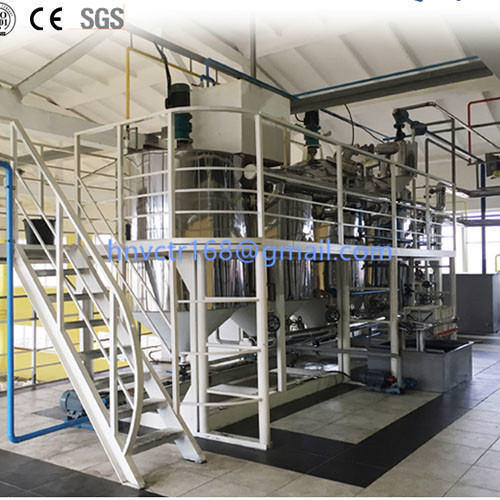Coconut oil processing technology
The main production areas of coconut palms are located in Asia, the islands in the Pacific Ocean, the central and southern parts of Africa and America, and the production of coconut palms is very high. Usually the coconut meat becomes dried coconut after being dried, and coconut oil is extracted from the dried coconut. Fresh coconut meat contains 30%-40% oil and 50% water, while the dried coconut contains 60% oil. %-70%, moisture 4%-7% coconut oil has a special fragrance. The world's coconut oil output in 2000 was 3.31 million tons. The Philippines is the world's largest supplier of coconut oil, followed by Indonesia, Malaysia, Papua New Zealand and Guinea.
Coconut oil is a special vegetable oil that belongs to lauric acid oils. The most abundant fatty acid in vegetable oil is lauric acid with the chemical formula [CH3(CH2)10COOH].
Coconut oil processing technology
Dry processing technongy: includes the use of dried coconut as a raw material to extract oil from a crusher or screw press. The mechanical extraction of oil is supplemented by a second extraction with a solvent to recover the residual oil in the salamander.
Mechanical oil extraction process: transport the dried coconut with a moisture content of 10%-12% to an automatic scale to remove iron fragments through a magnetic chamber, grind it into particles with a diameter of about 0.3cm, and press the particles into flakes to expand the surface of the dried coconut Oil making.
Flow chart:
coconut dry → automatic scale → magnet → grinder → steaming and frying Tempering device → screw oil press →
↓ ↓
small iron nuggets moisture
→ sedimentation tank → filter → crude coconut oil
↓ ↓
fine oil residue coconut cake
The flakes was steam-fried and tempered in a horizontal steam-frying pan at 115°C for 20 minutes. Under this condition, due to the breakdown of fat cells and precipitation of phospholipids, the moisture content was reduced to 3%. The steamed and fried flakes of the same size are sent to the oil press to continuously squeeze the oil. Along the inner section of the barrel to the tapered end outlet, most of the oil is discharged according to a uniformly decreasing characteristic curve. Generally speaking, the residual oil of the coconut cake after treatment is 7%.
The characteristics of coconut oil meal produced by a well-maintained screw press are as follows:
① Light oil color 8/50 (R/Y measured by Lovibond method).
② The cake is light brown and the highest residual oil is 8%.
③ The thickness of the coconut cake is the same, about 0.6cm and the fine powder does not exceed 6%.
Coconut oil is a special vegetable oil that belongs to lauric acid oils. The most abundant fatty acid in vegetable oil is lauric acid with the chemical formula [CH3(CH2)10COOH].
Coconut oil processing technology
Dry processing technongy: includes the use of dried coconut as a raw material to extract oil from a crusher or screw press. The mechanical extraction of oil is supplemented by a second extraction with a solvent to recover the residual oil in the salamander.
Mechanical oil extraction process: transport the dried coconut with a moisture content of 10%-12% to an automatic scale to remove iron fragments through a magnetic chamber, grind it into particles with a diameter of about 0.3cm, and press the particles into flakes to expand the surface of the dried coconut Oil making.
Flow chart:
coconut dry → automatic scale → magnet → grinder → steaming and frying Tempering device → screw oil press →
↓ ↓
small iron nuggets moisture
→ sedimentation tank → filter → crude coconut oil
↓ ↓
fine oil residue coconut cake
The flakes was steam-fried and tempered in a horizontal steam-frying pan at 115°C for 20 minutes. Under this condition, due to the breakdown of fat cells and precipitation of phospholipids, the moisture content was reduced to 3%. The steamed and fried flakes of the same size are sent to the oil press to continuously squeeze the oil. Along the inner section of the barrel to the tapered end outlet, most of the oil is discharged according to a uniformly decreasing characteristic curve. Generally speaking, the residual oil of the coconut cake after treatment is 7%.
The characteristics of coconut oil meal produced by a well-maintained screw press are as follows:
① Light oil color 8/50 (R/Y measured by Lovibond method).
② The cake is light brown and the highest residual oil is 8%.
③ The thickness of the coconut cake is the same, about 0.6cm and the fine powder does not exceed 6%.














